#Fabaceae: Faboideae
Photo

Grona varians
Cotyledons and First True Leaves
Image taken 79 days after seed scarified and plated on water agar and incubated at 20C and 72 days after potted in soil.
1 note
·
View note
Text





Hardenbergia violacea 'Snow White' with bee
17-JUL-2023
Melbourne, Vic
#australia#victoria#melbourne#flowers#australian natives#native flowers#false sarsaparilla#waraburra#white flowers#bee#honeybee#rosids#fabales#fabaceae#faboideae#hardenbergia#hardenbergia violacea#hardenbergia snow white#insect#arthropod#insecta#arthropoda#hymenoptera#apidae#corbiculata#apini#apis
8 notes
·
View notes
Photo


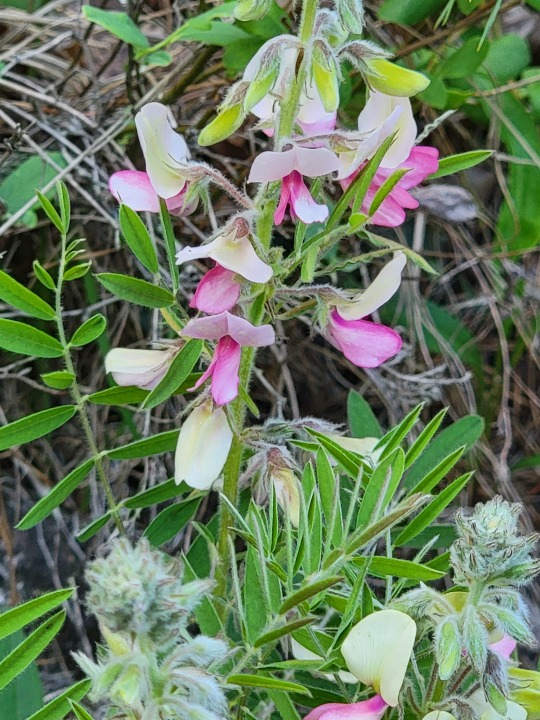
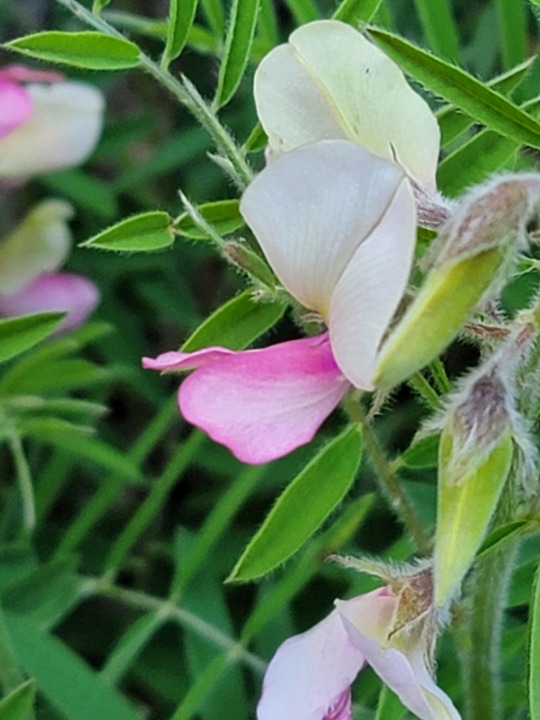
Virginia Goats Rue,
Tephrosia virginiana
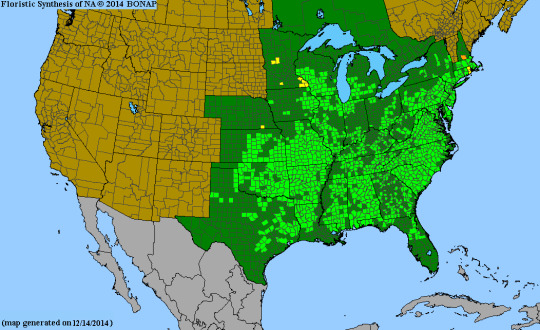
Whenever I see this plant I think acidic nutrient poor soils, ericaceous.
It prefers acidic weathering sand, well drained, in full sun, and often is associated with heavily mycorrhizal dependent environments despite not associating with mycorrhizae. It’s extremely good at nitrogen fixation and cannot take being shaded out. Sandy oak savanna, pine barrens, riolitic gravel barrens, dry prairie with an associated circum acidic ph are ideal locations for this species. Here, at RRG, we see it on a burn ridge, specifically in MG FE rich acidic sandstone in what is classified as an ericaceous heath belt. It is not a forbe despite it’s looks but has a woody basal crown and a very stout woody tap root that branches scarcely into tenuous fibrous roots with root nodules for the nitrogen fixing bacterial units. Some claim that this physiological trait is a caudex or a caudiform structure, though it’s more knobby and less of a thickened mass/base that hasn’t been fully investigated for water storage, instead I think that it’s maybe more likely to produce herbaceous epicormic shoots as a reaction to fire and may more likely be a lignotuber(post fire regenerative woody knobby base) instead of a caudex; either way, this woody habit makes this species a sub shrub and not a forbe. Animals are not likely to graze/ browse on this legume due to slight toxicity; with this said, the rotenone compound is a known icthyotoxic chemical (lethal to fish if made into root powder and used.) While no longer used for fishing due to knowledge of bio-accumulation of toxins, it is being researched for invasive species control. The species reminds me of partridge pea in it’s ground bird dispersed seeds, while we have a true Faboideae sect. species with banner and keel morphology, you’ll notice that it has an exposed/ keel and wing form allowing easy access and buzz pollination more often than most papillionaceous flowers. (senna and partridge peas are primarily buzz pollinated and are in sect. Caesalpinioideae (subfamily of fabaceae)). I see more bumble bees and wasps on this species than any other forbe this time of year ( Late May).
Most Tephrosia are coastal plains species with only one other “wide spread” species (T. spicata)
Though T. onobrychoides does make it in-land due to Oklahoma short grass prairie matrix.
42 notes
·
View notes
Text
สาคูเปียกอัญชันของอร่อยที่ใครก็ทำได้

อย่างแรกเลยเราก็มารู้จักกับดอกอัญชันกันก่อน

-อัญชัน ชื่อสามัญ Butterfly pea, Blue pea
-อัญชัน ชื่อวิทยาศาสตร์ Clitoria ternatea L. จัดอยู่ในวงศ์ถั่ว (FABACEAE หรือ LEGUMINOSAE) และอยู่ในวงศ์ย่อยถั่ว FABOIDEAE (PAPILIONOIDEAE หรือ PAPILIONACEAE)
-อัญชัน เป็นพืชที่มีต้นกำเนิดในแถบอเมริกาใต้ ปลูกทั่วไปในเขตร้อน ลักษณะของดอกอัญชันจะมีสีขาว สีฟ้า สีม่วง ส่วนตรงกลางดอกจะมีสีเหลือง และรูปทรงคล้ายหอยเชลล์ มีสรรพคุณที่เป็นเอกลักษณ์เฉพาะตัว เพราะมีสารที่ชื่อว่า “แอนโทไซยานิน” (Anthocyanin) ซึ่งมีหน้าที่ไปช่วยกระตุ้นการไหลเวียนของโลหิต ทำให้เลือดไปเลี้ยงส่วนต่าง ๆ ได้ดีมากขึ้น เช่น ไปเลี้ยงบริเวณรากผม ซึ่งช่วยทำให้ผมดกดำ เงางาม หรือไปเลี้ยงบริเวณดวงตาจึงช่วยบำรุงสายตาไปด้วยในตัว หรือไปเลี้ยงบริเวณปลายนิ้วมือ ซึ่งก็จะช่วยแก้อาการเหน็บชาได้ด้วย และที่สำคัญสารนี้ยังมีความโดดเด่นที่ใครหลาย ๆ คนยังไม่ทราบ นั่นก็คือช่วยลดความเสี่ยงของการเกิดเส้นเลือดอุดตันได้ และการ “กินดอกอัญชันทุกวัน…วันละหนึ่งดอก” จะช่วยป้องกันโรคเส้นเลือดสมองตีบได้อีกด้วย
ต่อไปเรามาเข้าเรื่องกัน นั่นก็คือวิธีทำ "สาคูเปียกอัญชัน"

ส่วนผสม สาคูเปียกอัญชัน
• สาคูเม็ดเล็ก 1/2 ถ้วย
• น้ำ 2 ถ้วย
• มะพร้าวอ่อนขูดเป็นเส้น ๆ
• เม็ดแปะก๊วยต้มสุก
• น้ำตาลทราย 1/2 ถ้วย
ส่วนผสม กะทิสำหรับราดขนม
• กะทิสำเร็จรูป 1/2 ถ้วย
• เกลือป่น
วิธีทำสาคูเปียกอัญชัน
1. ล้างสาคูในน้ำให้สะอาด เตรียมไว้
2. ใส่น้ำลงในหม้อ นำขึ้นตั้งไฟจนเดือด ใส่เม็ดสาคูลงต้มจนสุกใส เติมน้ำตาลทราย ต้มต่อจนเดือด ตักใส่ถ้วย
3. ใส่กะทิลงในหม้อ นำขึ้นตั้งไฟอ่อน เติมเกลือป่นเล็กน้อย ต้มจนเดือดข้น จากนั้นตักหยอดหน้าสาคูเปียกที่เตรียมไว้ โรยมะพร้าวอ่อนขูดกับแป๊ะก๊วยต้มสุก
แค่นี้สาคูเปียกอัญชันแสนอร่อยก็พน้อมทานแล้ว!
เรามาดูสรรพคุณของสาคูเปียกอัญชันบ้างดีกว่า
ประโยชน์ของสาคูเปียก
ประโยชน์ของสาคูแท้ ช่วยในเรื่องอะไรบ้าง แป้งสาคูมีเส้นใยสูง ในทางการแพทย์พบว่าแป้งสาคู เป็นคาโบไฮเดรตบริสุทธิ์ และช่วยสมานแผลในกระเพาะได้ ย่อยง่าย และเป็นอาหารที่ไร้สารเคมี 100% ปลอดภัยต่อผู้บริโภคอย่างแน่นอน
ประโยชน์ของอัญชัน
1. บำรุงสายตา ป้องกันอาการตาฝ้าฟาง ตาแฉะ และป้องกันโรคต้อกระจก
2. ช่วยลดน้ำตาลในเลือด เหมาะกับผู้ป่วยโรคเบาหวาน
3. เพิ่มภูมิต้านทานให้กับร่างกาย
4. ขับปัสสาวะ และเป็นยาระบายอ่อน ๆ
5. มีสารต้านอนุมูลอิสระ ช่วยต่อต้านโรคมะเร็งได้
6. ชะลอริ้วรอย และดูแลผิวพรรณให้เต่งตึง กระชับ
7. ลดความเสี่ยงในการเป็นโรคไขมันอุดตันเส้นเลือด
8. บำรุงผมให้เงางาม ดกดำ มักเป็นส่วนประกอบของยาสระผม หรือครีมบำรุงผม
9. ช่วยสลายลิ่มเลือด
10. ช่วยให้ระบบโลหิตไหลเวียนได้ดียิ่งขึ้น
ขอขอบคุณ
medthai.com
kapook.com
1 note
·
View note
Link
0 notes
Text
Klee
... ist eine 245 Arten umfassende Pflanzengattung. Sie wird zur Unterfamilie der Schmetterlingsblütler (Faboideae) aus der Pflanzenfamilie der Hülsenfrüchtler (Fabaceae) gezählt. Im Sprachgebrauch werden allerdings häufig nicht nur Arten dieser Gattung mit „Klee“ bezeichnet, sondern auch Arten aus den nahverwandten Gattungen Schneckenklee (Medicago) und Steinklee (Melilotus) sowie aus der Gattung Hornklee (Lotus) und der taxonomisch weit entfernten Gattung Sauerklee (Oxalis). Charakteristische Merkmale der Gattung sind dreifiedrige Blätter und vielblütige, kopfige Blütenstände. Die Gattung Klee ist auf allen Kontinenten, mit Ausnahme Australiens und Antarktikas, natürlich verbreitet. In Australien wurden verschiedene Kleearten durch den Menschen eingeführt.
In der Landwirtschaft werden 16 verschiedene Kleearten als Futterpflanzen verwendet. Kleeanbau ist sowohl in Europa als auch in Nordamerika von ökonomischer Bedeutung. In Europa wurde Wiesen-Klee (Trifolium pratense) schon ab dem 4. Jahrhundert angebaut. Durch die Fähigkeit, in Symbiose mit Knöllchenbakterien (Rhizobiaceae) an den Wurzeln Stickstoff aus der Luft zu binden, ist Klee auch für die Verbesserung der Bodenfruchtbarkeit bedeutend.
Das Kleeblatt fand in die Symbolik vieler Kulturen Eingang. Es repräsentiert stets die Dreiheit, wie zum Beispiel im Christentum als Symbol der Dreifaltigkeit. Weiterhin steht Klee für den Sommer oder symbolisiert die Liebe. Das vierblättrige Kleeblatt gilt als Glücksbringer. Außerdem ist der Shamrock ein Zeichen für Irland.
0 notes
Photo


Why are so many beautiful things invasive? Why?!
Still wondering how this was released into the wild to become invasive.
#Chinese wisteria#Plantae#Angiosperms#Eudicots#Rosids#Fabales#Fabaceae#Faboideae#Wisteria#Wisteria sinensis#wisteria vines#Nikon D3400#nikonphotography#my flora#my vines#my invasive species#nature photography#photographers on tumblr#Black Bayou Lake National Wildlife Refuge#flora of China#garden plants of Asia#plants used in bonsai#flora
10 notes
·
View notes
Photo

Silvery lupine (Lupinus argenteus) on Arapaho National Wildlife Refuge (via USFWS Mountain-Prairie)
Photo: Tom Koerner/USFWS
#Silvery Lupine#Lupinus argenteus#Lupinus#Faboideae#Fabaceae#Fabales#flowers#plants#lupine#prairie#wildlife refuge#Arapaho National Wildlife Refuge#Arapaho NWR#Colorado
11 notes
·
View notes
Photo

Medicago sativa, Luzerne Medicago sativa, Luzerne 190814, 182400, Parc des deux rives, Strasbourg, Notizblog Naturbeobachtungen: ...,
#Art: Luzerne#Eurosiden I#Fabaceae#Fabales#Faboideae#Familie: Hülsenfrüchtler (Fabaceae)#Gattung: Schneckenklee (Medicago)#Hülsenfrüchtler#L.#Luzerne#Medicago#Medicago sativa#Ordnung: Schmetterlingsblütenartige (Fabales)#Schmetterlingsblütenartige#Schmetterlingsblütler#Schneckenklee#Unterfamilie: Schmetterlingsblütler (Faboideae)#Wissenschaftlicher Name: Medicago sativa
1 note
·
View note
Photo

Some native hovea acutifolia along our walks. . . . #hoveaacutifolia #nativeaustralianflowers #essentialexercise #thebluemountainsnsw #australia #nature #straya #nativefloraaustralia #lockdown2021 #covidexploring #fabaceae #faboideae (at Ruined Castle) https://www.instagram.com/p/CRtFlpkFcKG/?utm_medium=tumblr
#hoveaacutifolia#nativeaustralianflowers#essentialexercise#thebluemountainsnsw#australia#nature#straya#nativefloraaustralia#lockdown2021#covidexploring#fabaceae#faboideae
0 notes
Text
Witchy plants:
🍀 Clover🍀

Clover or trefoil are common names for plants of the genus Trifolium, consisting of about 300 species of flowering plants in the legume or pea family Fabaceae originating in Europe.
Scientific name: Trifolium
Family: Fabaceae
Subfamily: Faboideae
Order: Fabales
Kingdom: Plantae
Tribe: Trifolieae
Spiritual meaning:
The three leaves of a shamrock are also said to stand for faith, hope and love. A fourth leaf is where we get the luck from. The four-leafed clover, or “lucky clover”, is an uncommon variation of the three-leafed clover, and widely considered to be a symbol of good luck.
Planetary connection:
Mercury
Zodiac connection:
Gemini ♊
Virgo ♍
Health benefits:
Bone health
Hormone based health
help with menopause and menstrual symptoms
Helps dealing with hot flashes
Red clover extract specifically has been used in traditional medicine to promote skin and hair health
It's believed clover can improve heart health in postmenopausal women
{ Many believe clover specifically red clover can help with weight loss, cancer, asthma, whooping cough, arthritis, and other conditions. BUT limited evidence shows that red clover helps with any of these illnesses.}
Mythology + superstition:
I'm pretty sure we all know the four leaf clover superstition that originated with the Druids.
The clover is a symbol for Ireland's patron saint, Saint Patrick.
Some stories came Eve carried a clover from the garden that the Archangel Chamuel told her to take.
The four leaf clover was used to explain king Aengus of Ireland the essence of the Holy Trinity.
In Welsh mythology The Mabinogion the white clover is mentioned as the epitome of beauty.
The King Arthur-legend Cullwck and olwen also called the twrch trwyth is of King Arthur's nephew, that wants to wed the beautiful Olwen Aka daughter of the giant Yspaddaden Penkawr. Olwen was so beautiful, that she left a trail of white clover in her trail, wherever she went.
Paganism + witchcraft:
Clovers hold a huge symbol in druidism
They are a symbol for the pagan holiday known as Green day which takes back power from saint Patrick's day since saint patrick was a monster.....
The Celtic faith saw a great value in the power of threes so even the common three leaf clover was seen as a protective symbol.
It's believed by many pagans that the fae are linked with clovers but I've found little proof of this other then family superstitious beliefs.
In witchcraft the clover is often used for luck, fertility and protection.
The old Celtic traditions say that someone carrying a shamrock would be able to ward away evil.
Some divine associated with the clover:
The Archangel Gabriel
Angus Mac Og
Anu
Bel
Fortuna
Blodeuwedd
Tyche
Lleu
The Fae in general
Brid
Archangel Chamuel
Dagda
Diancecht
#babacore#witch#witchcraft#lgbt+#lgbtq#pagan witch#naturecore#nonbinary#enby#green witch#witchy#witches#baby witch#witchythings#witchlife#witchcore#witchyvibes#paganlife#paganism#pagan#baby pagan#pagancommunity#plants#herbs#gardencore#plantcore#magick#spells#spellcaster
31 notes
·
View notes
Photo
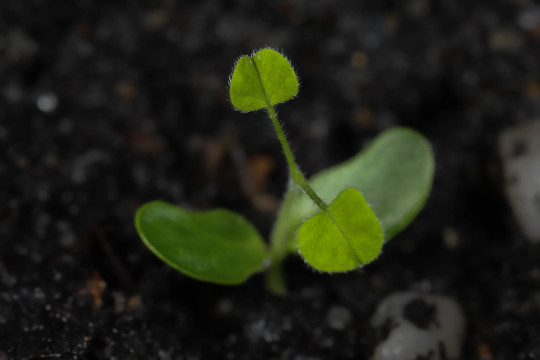
Grona varians
Cotyledons and First true leaves
Image taken 20 days after seed scarified and plated on water agar and incubated at 20C and 13 days after potted in soil.
0 notes
Text

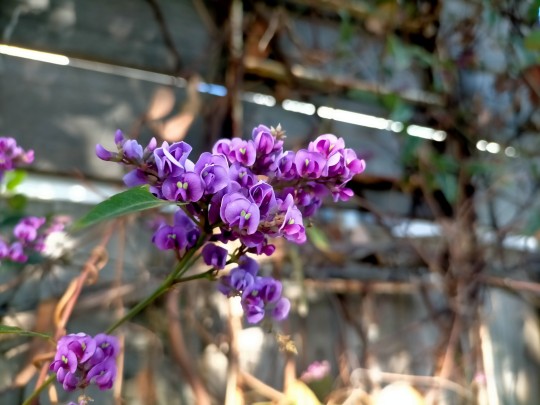
Hardenbergia violacea
17-JUL-2023
Melbourne, Vic
#australia#victoria#melbourne#flowers#australian natives#native flowers#purple flowers#false sarsaparilla#purple coral pea#waraburra#purple twining pea#vine lilac#wild sarsaparilla#rosids#fabales#fabaceae#faboideae#hardenbergia#hardenbergia violacea
1 note
·
View note
Photo

Swainsona sp., a native pea flower. Most Australian Fabaceae flowers are yellow, orange or red, so the purple swainsonas are pretty special! Many of them are quite rare too and typically favour semi-arid regions.
1 note
·
View note
Video
J20170615-0059—Trifolium wormskioldii—RPBG by John Rusk
Via Flickr:
Trifolium wormskioldii—cow clover. The species grows throughout western North America from Alaska to Mexico, often in moist places. The leaves and roots were used as food by Native Americans. It is host to the caterpillar of the Western cloudywing butterfly (Thorybes diversus). Photographed at Regional Parks Botanic Garden located in Tilden Regional Park near Berkeley, CA
#ebparksok#taxonomy:kingdom=Plantae#Plantae#taxonomy:subkingdom=Tracheophyta#Tracheophyta#taxonomy:phylum=Magnoliophyta#Magnoliophyta#taxonomy:class=Magnoliopsida#Magnoliopsida#taxonomy:order=Fabales#Fabales#taxonomy:family=Fabaceae#Fabaceae#taxonomy:subfamily=Faboideae#Faboideae#taxonomy:tribe=Trifolieae#Trifolieae#taxonomy:genus=Trifolium#Trifolium#taxonomy:species=wormskioldii#taxonomy:binomial=Trifolium wormskioldii#Trifolium wormskioldii#coast clover#cow clover#Springbank Clover#Trébol de la costa#taxonomy:common=coast clover#taxonomy:common=cow clover#taxonomy:common=Springbank Clover#taxonomy:common=Trébol de la costa
2 notes
·
View notes
Photo

Exotic Rare Scarlet wisteria Hummingbird Tree Sesbania Grandiflora Agati Tropical Fruit Seeds, Organic B5 This small ornamental tree with a straight trunk produces a mass of large, 3-4" white flowers resembling little birds. Its lower branches create a floral canopy from November to June. Tolerates flooding. The flower is large and distinctively curved. Vertical pods, located near the flowers, can contain up to 20 seeds. The tender leaves, green fruit, and flowers are eaten alone as a vegetable or mixed into curries or salads. Flowers may be dipped in batter and fried in butter. Tender portions serve as cattle fodder. Ripe pods apparently are not eaten. The inner bark can serve as fiber and the white, softwood not too durable, can be used for cork. The wood is used, like bamboo, in Asian construction. The tree is grown as an ornamental shade tree and for reforestation. Bark, leaves, gums, and flowers are considered medicinal. In Java, the tree is extensively used as a pulp source. A gum resembling kino (called katurai), fresh when red, nearly black after exposure, exudes from wounds. This astringent gum is partially soluble in water and in alcohol but applied to the fishing cord, it makes it more durable. Pepper vines (Piper nigrum) are sometimes grown on and in the shade of the agati. Dried and powdered bark is used as a cosmetic in Java. An aqueous extract of the bark is said to be toxic to cockroaches. Sesbania grandiflora a short-lived, quick-growing, soft-wooded tree, 15mt. High and 0.6m in girth it is a native of Malaysia and is grown in many parts of India such as Punjab, Delhi, Bengal, Assam and the Andamans. Leaves 15-30cm long, abruptly pinnate; leaflets 41-61, linear-oblong, glabrous, 2.5-5.0cm x 0.5 - 1.6cm; racemes 2 - 4 flowered, short, axillary; flowers 6.0-10cm long with showy, fleshy white, pink or crimson petals; pods pendulous 30.0 - 45cm x 0.6-0.8cm, rather flat and somewhat 4-cornered, non-torulose, septate with swoolen margins and 15-50 pale colored seeds. Agathi is grown for ornament and is valued as food and also as a good fodder. It is grown as a support for pepper and betel vines, as shade plant for coconut seedlings, and as wind-break in banana fields. Bark yields a good fibre and a gum and various parts of agathi have medicinal value. Count: ~ 5 Sun Exposure Full sun from an early age Light shade when young Frost Tolerance Severe Water Requirements Moderate Drought Tolerance Yes Wind Tolerance High Tolerance of Coastal Conditions Yes Sesbania grandiflora, Agati grandiflora Hummingbird Tree, Butterfly Tree, Agati Family: Fabaceae Subfamily: Faboideae Origin: Asia and Australia The Hummingbird Tree is a small, tropical tree in the legume family that has large, beautiful pinkish-red or white flowers and feathery, pinnate leaves. The flowers resemble hummingbirds in flight. The flowers, young bean pods and leaves are edible and are used as a vegetable throughout southeastern Asia. It is also known as the vegetable hummingbird and the agati sesbania. It has a fast growth rate. It is native to Malaysia and Australia. The root, leaf, bark, and flower all have medicinal properties. It is very attractive to pollinators and birds as well. In Asia, the wood is used like bamboo for light construction and in reforestation efforts and as a shade plant for coconut seedlings. It grows wild in tropical lowlands and fields and along roadsides. It is often grown as an ornamental in the tropics. Growing Instructions 1. The seeds like moist, well-drained soil. Prepare a mixture of half potting soil and half sand, perlite or vermiculite. Put the soil in a pot. Water the mixture so that it is moist but not wet. 2. Put the seeds on the soil. 3. Cover the seeds with a thin layer of soil. 4. Water the seeds. 5. Place the pots in an area with warm temperatures in full sun or part shade. 6. When the seedlings are a few inches tall, they can be transplanted. Requires a sunny position for best growth. Prefers a fertile, moist but well-drained moderately light soil, though it succeeds in light sandy, medium, heavy clayey and low fertility soils. Prefers a pH in the range 5.5 - 8.5, but can tolerate acid conditions down to 4.5 Scarification: Soak in hot tap water, let stand in water for 24 hours. Stratification: none required. Germination: Sow seed 1/4" deep, tamp the soil, mulch the seed bed. Other: If hot water does not allow the seed to imbibe, nick the seed carefully and soak again in warm water. How do you care for Sesbania grandiflora? Requires a sunny position for best growth[404 ]. Prefers a fertile, moist but well-drained moderately light soil, though it succeeds in light sandy, medium, heavy clayey and low fertility soils[200 , 302 , 404 ]. Prefers a pH in the range 5.5 - 8.5, but can tolerate acid conditions down to 4.5[404 ]. Germination Plant seeds in a good garden soil that is well-drained fertile soil. During growth, use a tutor. The tutor can even be used after growth. Fertilizer can be used once a week during growth. This plant enjoys a sunny spot. Germination takes 15-30 days, it can be longer, don’t get discouraged. Germinating Palm Seeds The following instructions will work for most species. If the seeds appear dry, soak them in warm water for 1-3 days. For sowing, use peat, coco fiber, or a similar medium. It should be moist but not wet. Take a fistful. If you can just squeeze a couple of drops of water from it, then it is about right. If you can squeeze more, then it is too wet. If too dry, add a little water and try again. Mix the seeds with the moist compost and place them into a clear plastic (Ziploc) bag, label with species name and date, and seal. No light is required for germination. Tropical species such as Licuala, Bismarckia, or Cyrtostachys require heat, around 30°C/90°F. Temperate species such as Trachycarpus, Ceroxylon, or Parajubaea will germinate at lower temperatures, and heat may actually prevent germination. You may want to check the species descriptions for individual requirements. Check weekly for signs of activity by looking for white roots through the plastic. Ensure that the medium does not dry out. The seeds can take anywhere from 2 weeks to 2 years (or more) to germinate; however, most will sprout after 4-6 weeks. After the seeds have sprouted, plant each in a tall, narrow pot using a well-drained medium, label, and place in ample light, but not in full sun. Aim to keep the soil moist (but not wet) at all times. Feed and repot as required. More information can be found in the comments on the species pages. We also recommend consulting one of the many books on palms available through this website, as well as articles on the internet: http://springsofeden.myshopify.com/products/exotic-rare-scarlet-wisteria-hummingbird-tree-sesbania-grandiflora-agati-tropical-fruit-seeds-organic-b5
#organic seeds#fruit seeds#rare seeds#palm tree seeds#Sesbania Grandiflora#Tropical Fruit Seeds#Hummingbird Tree#Butterfly Tree#Agati#Agati grandiflora#Sesbaniagrandiflora
0 notes